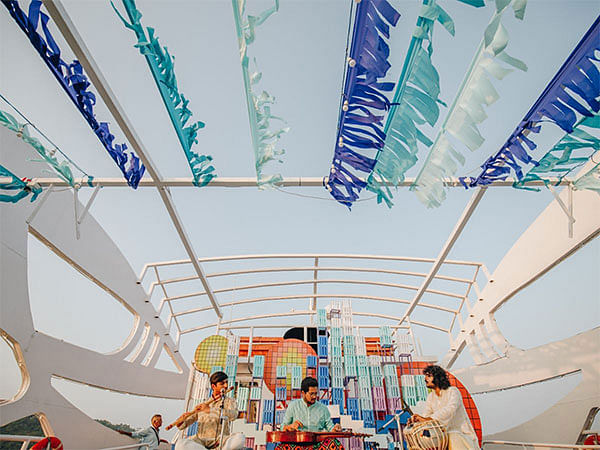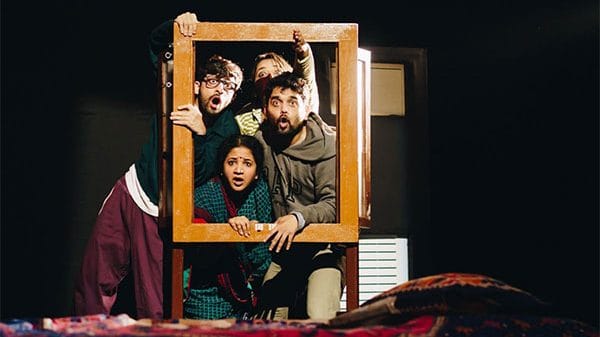I will never forget the rush of joy when I got to read an actual Poem on the Underground in London, even though I have forgotten the actual poem. The project, started by three friends almost 40 years ago, feels like receiving an unexpected private gift in public. For decades, these verses have softened the rub of the evening commute, quiet little interventions in urban routine that transform London’s most pragmatic mode of transit into a site of contemplation.
Next week, Panaji will revisit this tradition. In shuttle cabs moving between venues at the annual Serendipity Arts Festival, six poets will share their verses with commuters—not through printed placards but through intimate performances. The poems, in Hindi, English, Punjabi, and Konkani, will expand the definition of public art by a few notches, where the line between performer and audience dissolves into conversation.
This small but significant intervention, curated by poet-photographer Salil Chaturvedi, captures the spirit of the festival’s ninth edition. Through art installations that remain incomplete without human mediation and accessibility programming that reconstructs limitation as creative possibility, SAF isn’t merely occupying Panaji’s spaces. It’s inviting the city and its people to co-author a new cultural chronicle.
In a way, this approach feels natural to Panaji, a city that encourages aimless flâneuring and discovery—best symbolised by the Goan balcao, a space between home and the world, simultaneously public and private. This year, the festival has given this architectural element wheels. Traveling Balcãos, a mobile public art installation, will traverse the city’s neighbourhoods, creating temporary zones of gathering and exchange. In a world where chatting feels like a luxury, these moving verandahs offer strangers the chance to become friends.
Also read: The fight to revive story of Goa’s son Faria also defines its place in India today
Multiplay and co-creation
This reenvisioning of traditional spaces extends into other exhibits and corners across the city, such as the ‘Panjim Cube’ project, where artists were invited to conceptualise an 8x8x8-foot cube suspended in the city. According to its description, “this cube beckons passers-by to step inside and immerse themselves in its depths… and to become part of a living, breathing work of art.” Meanwhile, in the “Memory of Birds” exhibit, Lebanese-British artist Tania Al-Khoury, in collaboration with a trauma therapist, invites us to a somatic experience crafted from the sounds of migratory birds.
Several of these participatory projects have been curated by the artist duo Thukral & Tagra as part of the exhibition “Multiplay”. Spread across an entire floor of the Old GMC Complex, this exhibition brings together artists from various disciplines, including visual artist LN Tallur, fashion designer Himanshu Shani of 11.11/eleven eleven, graphic novelist and filmmaker Sarnath Banerjee, musician Talvin Singh, and Social Design Collaborative. Here, traditional boundaries between viewer and artwork dissolve entirely, and the exhibited pieces remain deliberately incomplete until activated by human presence. It’s a radical departure from the conventional museum model, where meaning flows in one direction—from institution to viewer.

“Multiplay” takes off from Thukral & Tagra’s belief in art that attracts engagement from the viewer, resulting in a “different kind of intimacy towards the work, between two people that are co-creating”. “It works around the boundaries of relational art,” the duo told me in a joint interview. “The artist becomes a kind of facilitator, and also learns through these experiments. It’s like a sandbox.” Thukral & Tagra are part of the curator group that has put together SAF’s visual arts programming.
This participatory spirit of the interaction weaves through every discipline at the festival. Zubin Balaporia and Bickram Ghosh curate a music section that blurs genre boundaries. In the culinary arts, the collective Edible Issues turn food into narrative, exploring how what we eat carries stories of caste, community, and resistance. Perhaps most significantly, Chaturvedi steps into the pioneering role of Accessibility Curator, reexamining not just how art can be accessed but how limitations can become portals to new artistic possibilities.
Also read: Goans are mixing it all up–Fado music with sitar and ragas
Making art truly inclusive
The festival’s focus on accessibility goes beyond standard checklists. “We realised it was becoming a bit of a checkbox because that’s how everyone views accessibility,” Smriti Rajgarhia, director of the Serendipity Arts Foundation, told me. “A ramp might ensure your festival gets passed as accessible, but it doesn’t make it inclusive.”
This is where Chaturvedi’s role becomes transformative. His approach stems from personal experience. At a previous SAF edition, Chaturvedi mounted an outdoor photography exhibition titled “The Places My Chair Likes To Go”. But it was the accompanying installation that gave visitors pause: two ramps—one built to standard specifications and another steeper and more challenging. “Access means I should be able to use things on my own,” Chaturvedi explained, and the ramp installation really drove home the point.
This year, his curation expands that philosophy further. Take “Nature’s Symphony”, a collaboration with The Goa Bird Conservation Network that reimagines birdwatching for people with visual impairments. Through sensory aids and audio descriptions, participants explore birds through a richer vocabulary of sound, touch, and presence. Or consider “Blind Date with Friends”, where a participant with sight pairs with a visually impaired person to discover the festival together, enriching their understanding of art and public spaces. “One of the phrases of the disability movement is, ‘Nothing about us without us,’” Chaturvedi said.

These reimaginings of inclusivity reflect a deeper truth about how cities hold and nurture culture. Rajgarhia’s journey with SAF began with an academic question: Can Indian cities, like their European counterparts, sustain themselves on culture?
In Panaji, SAF found more than just a venue—it uncovered a city whose very design fosters cultural communion. Its walkable streets and networked communities echoed cities like Adelaide and Edinburgh, where festivals have woven themselves into the urban fabric. Under Rajgarhia’s stewardship, SAF has grown in scale and ambition while demonstrating how we might imagine our cities as living archives of human connection.
As poetry travels through Panaji’s streets and art awaits a human touch to complete itself, we’re reminded that culture isn’t something that just happens to a city—it’s something the city and its people create together.
This article is part of the Goa Life series, which explores the new and the old of Goan culture.
Karanjeet Kaur is a journalist, former editor of Arré, and a partner at TWO Design. She tweets @Kaju_Katri. Views are personal.
(Edited by Prashant)






